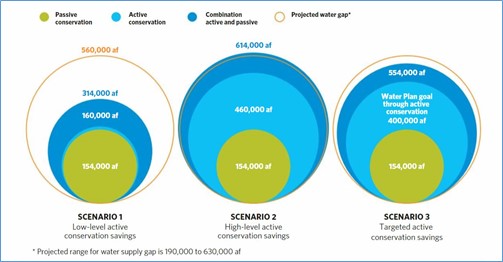Conservation in Colorado
In a headwaters state with a semi-arid climate, water supplies are limited. Compounding matters, water demand across the state is high and only expected to grow: Colorado’s Department of Local Affairs (DOLA, 2015) projects the state’s population to nearly double to 8.6 to 10 million people by 2050. As Colorado’s Water Plan (State of Colorado, 2015a) points out, this population growth will create a significant need for an additional 600,000 to one million acre-feet (AF) of water annually to meet future municipal and industrial (including self-supplied industrial) demands. Furthermore, besides managing its own water security, Colorado must ensure approximately two-thirds of the water it produces annually passes out of the state for interstate and international legal obligations (Water Education Colorado [WEco], 2021).
According to the Statewide Water Supply Initiative 2010 (Colorado Water Conservation Board [CWCB], 2011), Coloradoans have the potential to save between 160,000 AF and 460,000 AF by 2050 through “active” conservation and another 154,000 AF through “passive” conservation annually.

